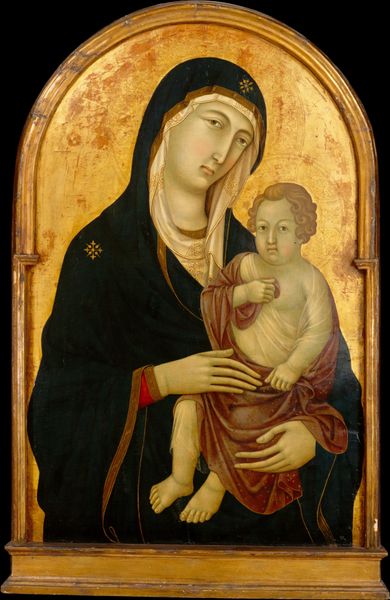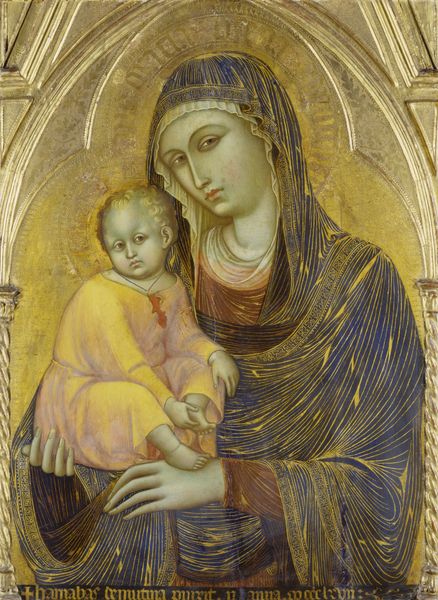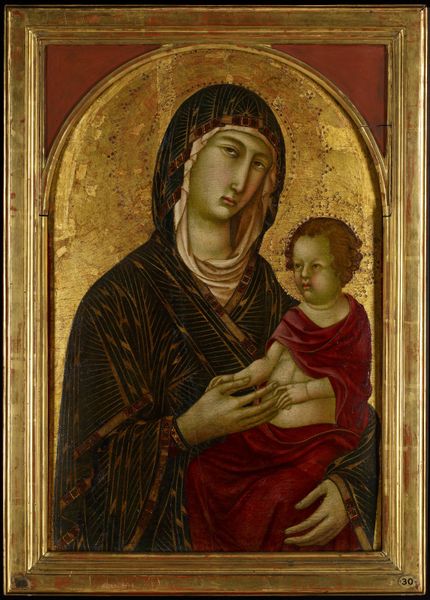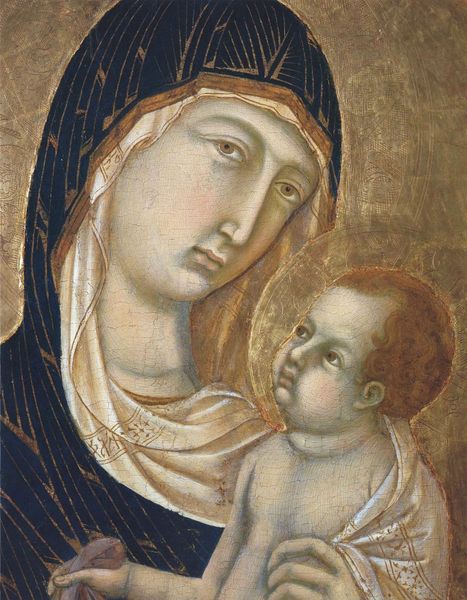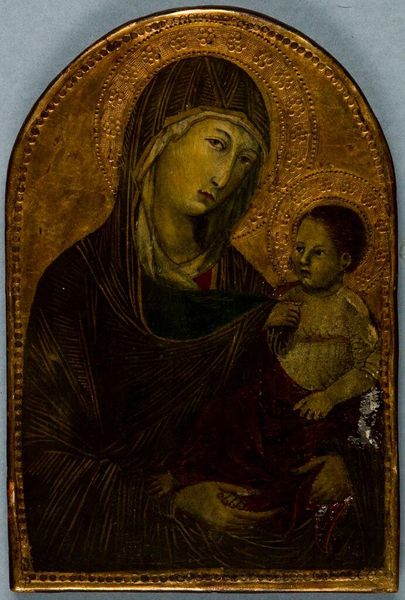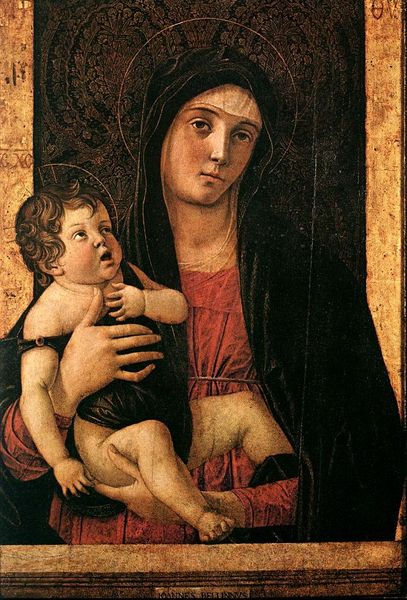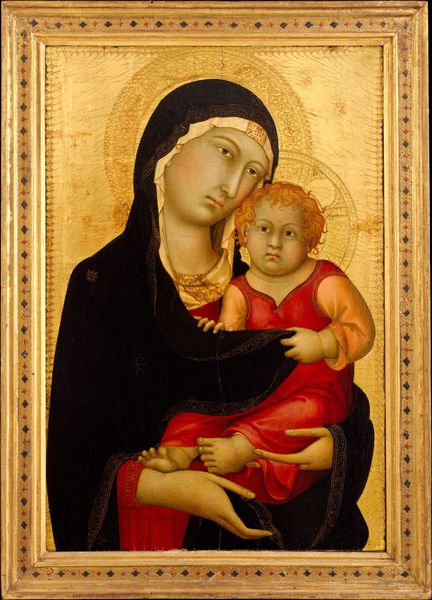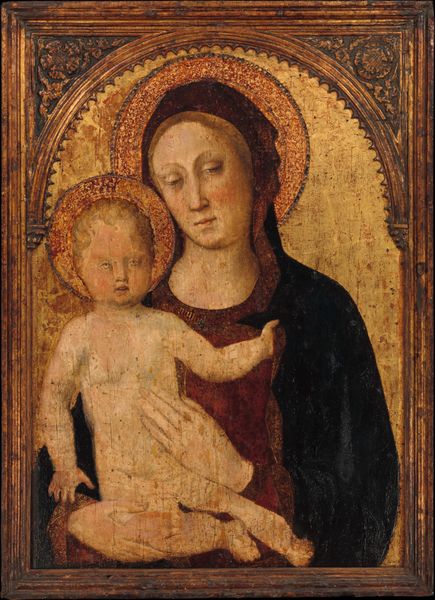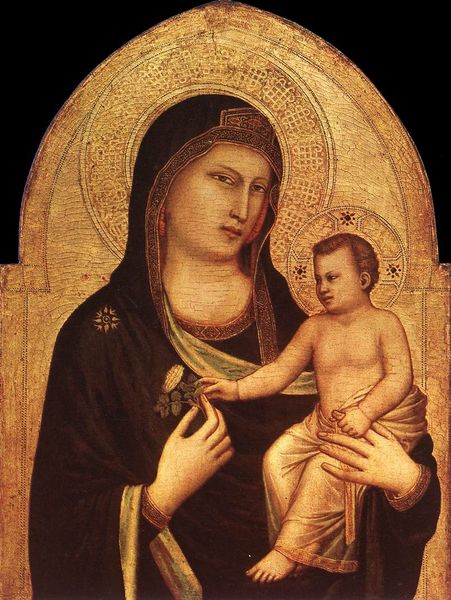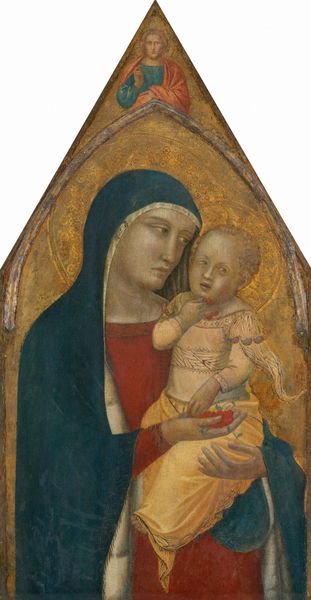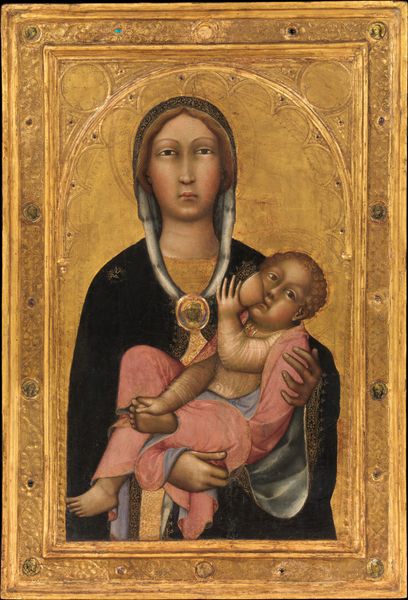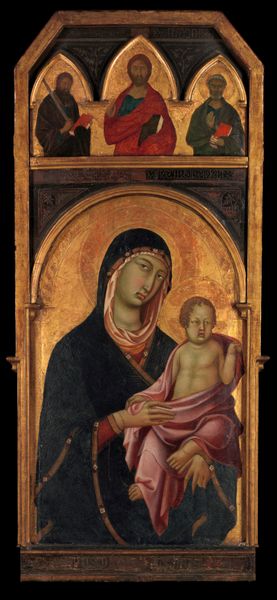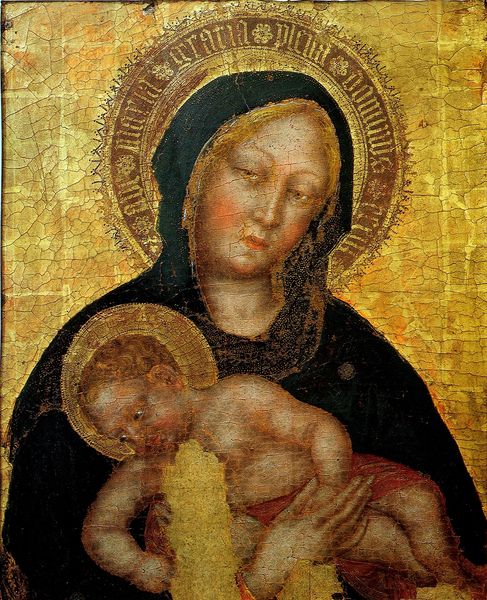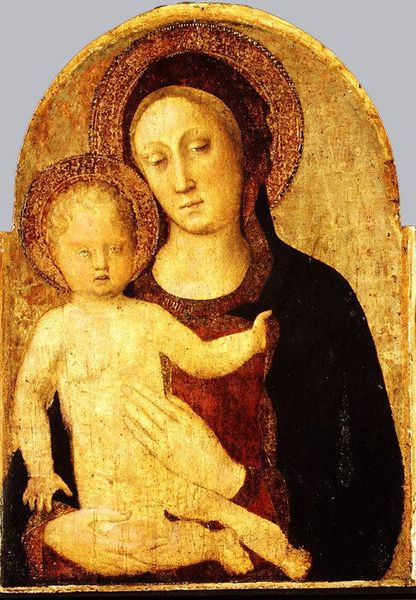
tempera, painting
#
portrait
#
byzantine-art
#
medieval
#
narrative-art
#
tempera
#
painting
#
landscape
#
sienese-school
#
figuration
#
madonna
#
child
#
arch
#
christianity
#
genre-painting
#
history-painting
#
italian-renaissance
#
miniature
#
angel
Dimensions: 97 x 63 cm
Copyright: Public domain
Curator: Here we have Duccio's "Madonna with Angels," created around 1305. The medium is tempera on panel. The gaze of the Madonna seems to pull one in, wouldn't you agree? Editor: The overall effect is undeniably somber. The darkness of Mary's robe against the aged gold background—it evokes a sense of reverence but also a certain...distance. Curator: Consider the social and economic backdrop of 14th-century Siena, where Duccio worked. Panel paintings like these were often commissioned by wealthy patrons or religious confraternities. The use of tempera, requiring painstaking layering and precision, speaks to a workshop culture dependent on skilled labor and costly materials such as the lapis lazuli to render Mary’s mantle. Editor: Indeed. But the formal elements themselves tell a rich story. Note how the lines of the angels' wings echo the curve of the archway, creating a visual harmony that is quite pleasing, despite the somewhat melancholic feeling. And see the Madonna's elongated fingers, a stylistic choice that directs our attention to her delicate handling of the Christ child. Curator: These choices also had an important impact on the reception of the image for those it served within medieval Italian society. Remember these were intended for devotional use and were not just autonomous works, they guided ritual action and belief. How much labor was required for this piece, and who was it for? These are not trivial questions for this work. Editor: Of course. But it is the pure visual effect that remains arresting, isn’t it? The way Duccio employs light to gently model the faces, bestowing a sense of humanity and depth, all within the framework of Byzantine tradition. And those subtle shifts in color! From ivory to rose, in Mary’s cheek... masterful. Curator: These works serve as portals through time, speaking to networks of artisans and complex webs of commerce. How might changes in trade affected access to key materials that Duccio’s atelier would have used? Editor: Agreed, the details of labor and the economics of making matter. The finished work invites lingering meditation, as it makes clear that Duccio knew precisely how to craft an icon of power and pathos within a rigid pictorial structure. I will think differently about panel painting construction processes and artistic choices because of your perspectives on Duccio.
Comments
No comments
Be the first to comment and join the conversation on the ultimate creative platform.
